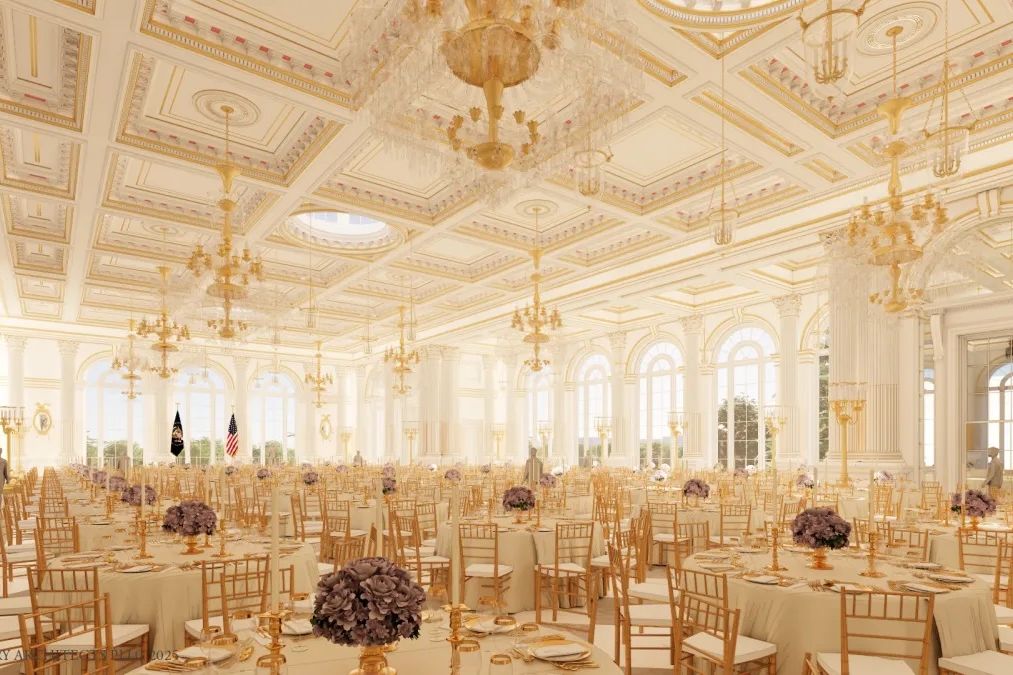
Donald Trump may be the only person who’s ever stood before a crowd and boasted, “I’m very good at building ballrooms.” While Trump is known for making self-aggrandizing claims with no basis in reality, he’s actually trying to prove this one is true with a high-stakes addition to the White House.
In June 2025, Trump announced on Truth Social that the White House would soon have a new ballroom, “compliments of a man known as Donald J. Trump.” A month later, the White House announced vague plans to build a 90,000-square-foot state ballroom off the East Wing. That’s nearly double the size of the residence, making this the biggest White House renovation in decades. While Trump has always said he would pay for the ballroom himself, it’s unclear how much he’s contributed to the project. And while the project has not been approved by the federal agency that oversees major renovations to government buildings, the East Wing has been totally demolished to make way for the ballroom.
Here’s a guide, which we’ll keep updated, to everything we know about the new White House ballroom, including artist renderings, cost estimates, and the construction timeline.
When did Trump announce his ballroom plan?
Trump started talking about building a White House ballroom before he even entered politics. It became clear that this was more than just weird Trumpian musing in June 2025, when he revealed on Truth Social that he’d selected a site for the project:
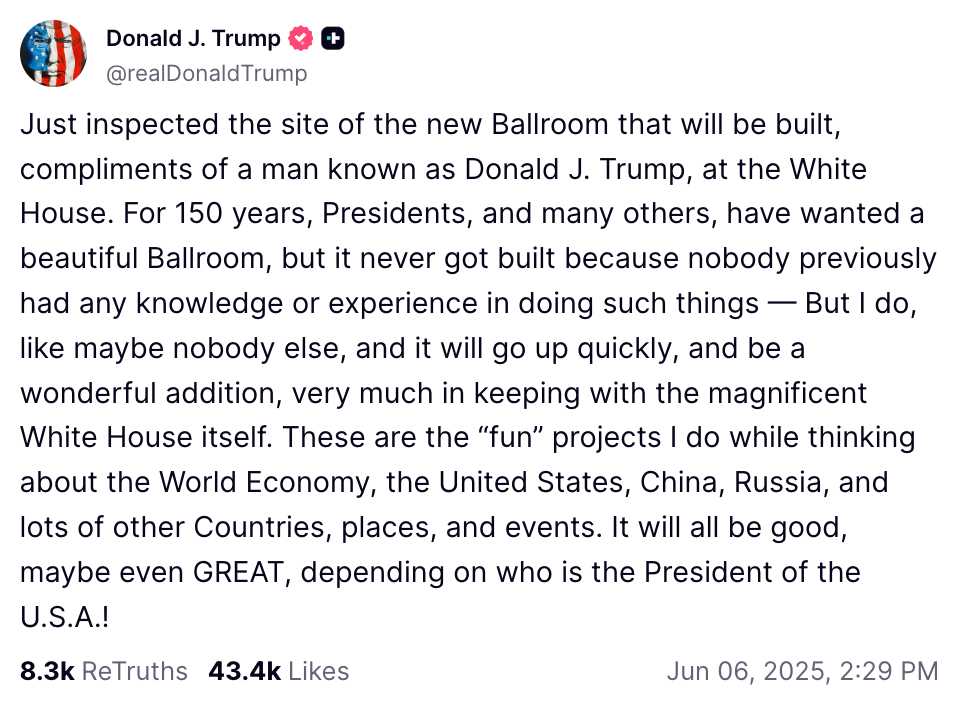
On July 31, 2025, White House press secretary Karoline Leavitt announced that construction of a 90,000-square-foot ballroom would begin soon, with McCrery Architects as lead architect:
On August 5, 2025, Trump took a “little walk” on the White House roof with architect Jim McCrery to get a bird’s-eye view of where the building will go:
don't jump, sir! pic.twitter.com/LngB2CSeno
— Aaron Rupar (@atrupar) August 5, 2025
When did demolition start?
Work began on the project began in mid-September with some tree removal. Trump pointed out the work trucks to reporters on Thursday, September 11, noting, “They’ve just started construction of the new ballroom.”
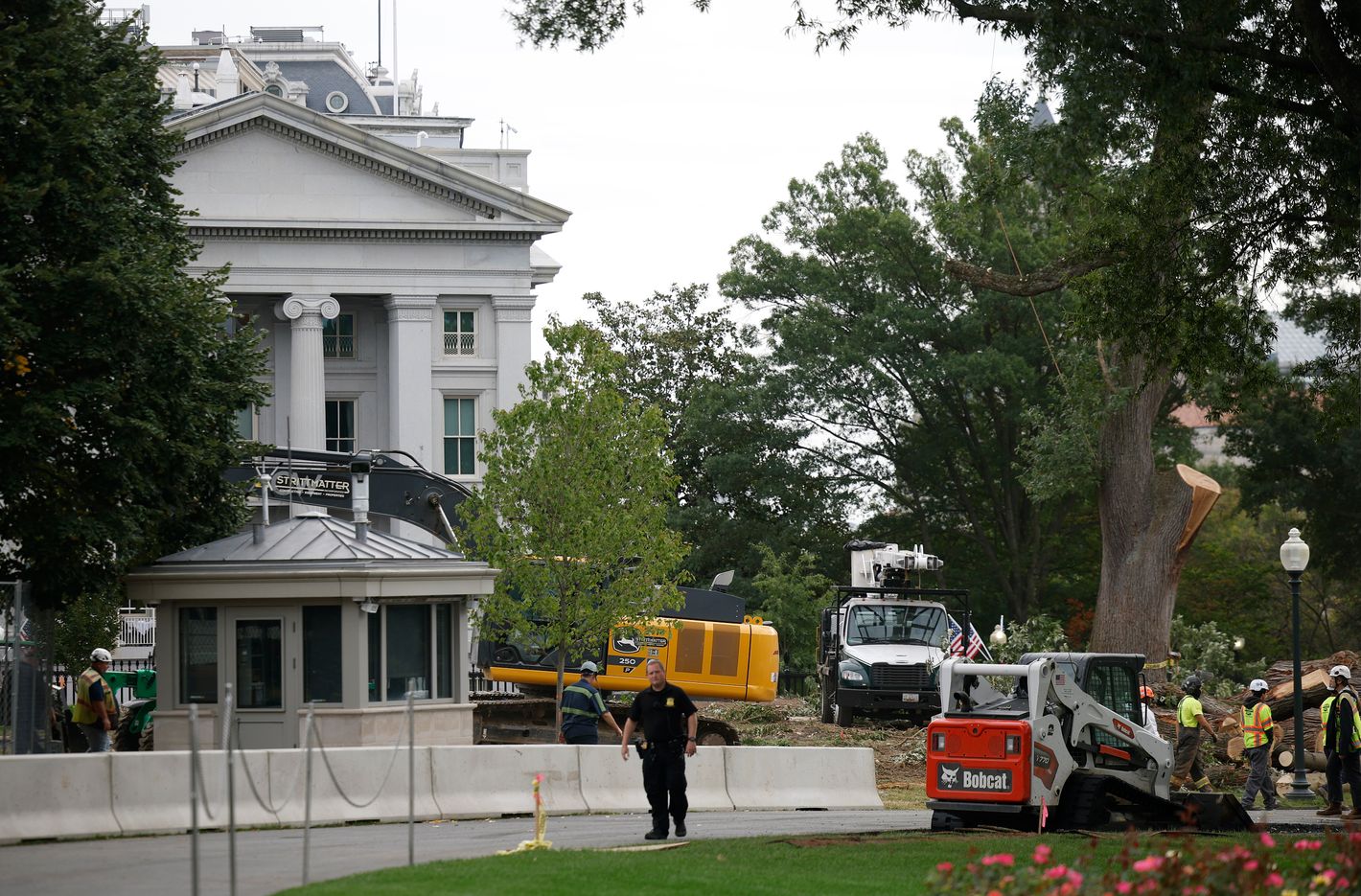
When asked about the scope of the landscaping project, the White House gave the Post the run around:
On Thursday, a White House official said crews are in the “preservation stage,” in which they move trees, shrubs and other foliage to an off-site nursery for safekeeping. The official said those efforts could last several weeks. The official referred questions about landscaping details to the National Park Service, which manages the White House grounds.
A spokeswoman for the Park Service said she could not give the number of White House trees affected by the project or the status of those that had already been trimmed or felled.
On October 20, demolition crews began tearing down part of the White House. Photos showed a backhoe ripping through the facade of the East Wing.
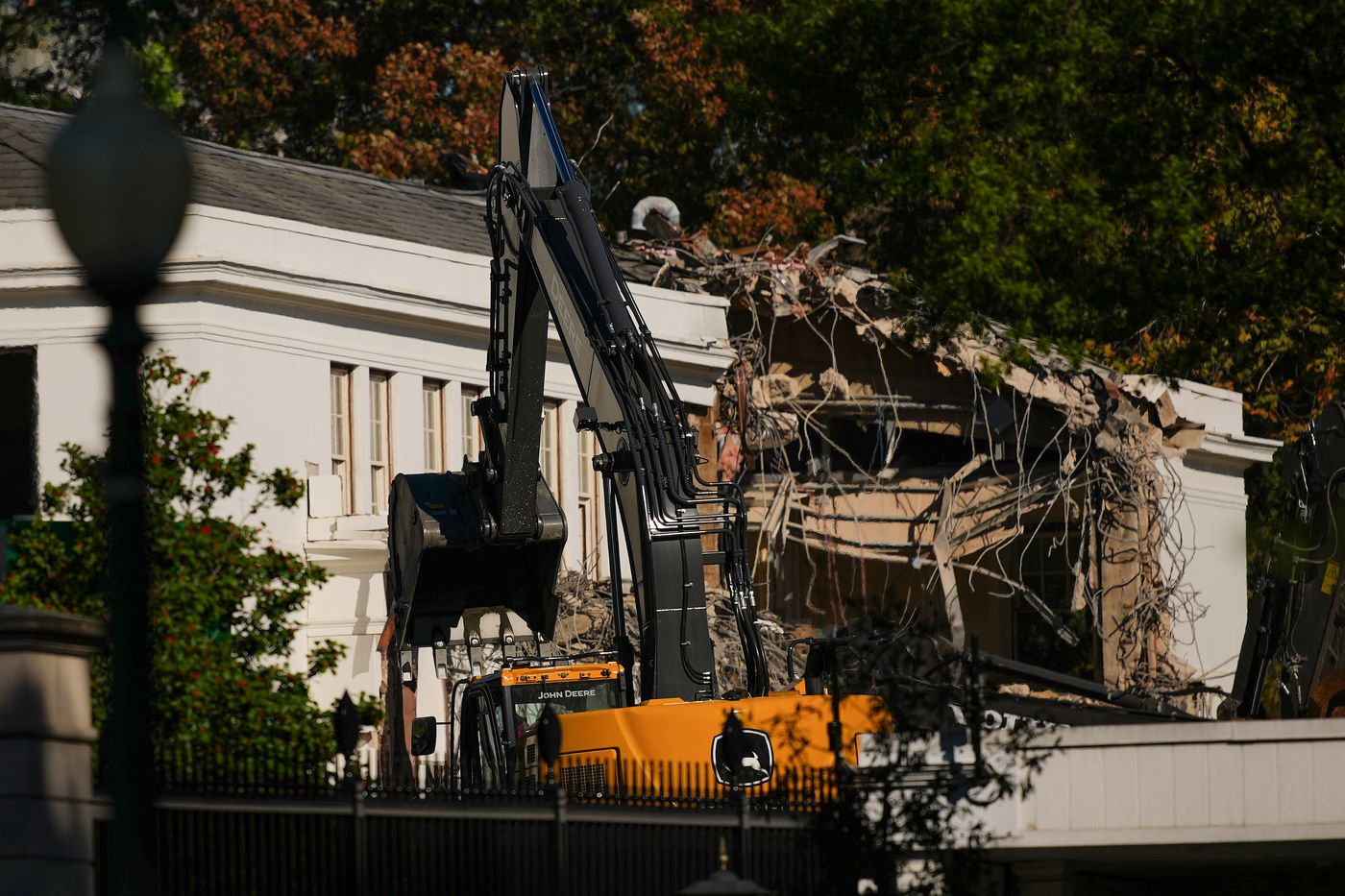
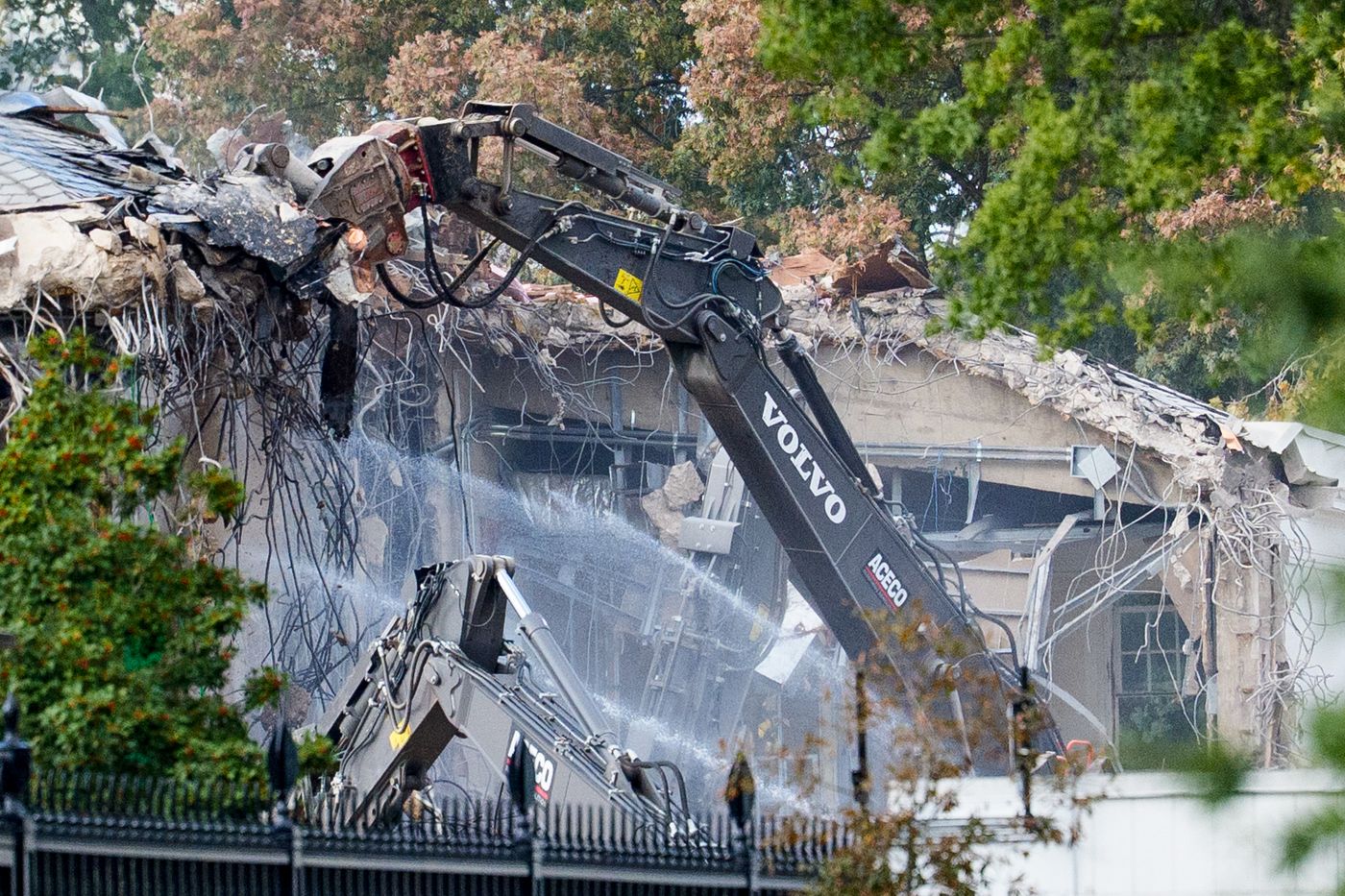
The Treasury Department told employees, whose offices are next to the East Wing, not to share photos of the project.
“As construction proceeds on the White House grounds, employees should refrain from taking and sharing photographs of the grounds, to include the East Wing, without prior approval from the Office of Public Affairs,” a Treasury official wrote in an email, according to the Wall Street Journal.
Was the entire East Wing torn down?
Yes, though White House officials did not initially make that clear.
The first White House press release on the ballroom said it would be located, “where the small, heavily changed, and reconstructed East Wing currently sits”:
The White House Ballroom will be substantially separated from the main building of the White House, but at the same time, it’s theme and architectural heritage will be almost identical. The site of the new ballroom will be where the small, heavily changed, and reconstructed East Wing currently sits. The East Wing was constructed in 1902 and has been renovated and changed many times, with a second story added in 1942.
But later in July, Trump said his ballroom project, “Won’t interfere with the current building. … It’ll be near it but not touching it — and pays total respect to the existing building, which I’m the biggest fan of.”
Don't worry "it won't interfere with the current building".
Another Trump LIE! pic.twitter.com/XmiLhC679o
— Ken S 🇨🇦 (@kstaubin) October 22, 2025
After photos of the destruction of the East Wing’s facade went viral in mid-October, an anonymous White House official confirmed the whole building was coming down, telling ABC News that the “entirety of the East Wing will be modernized.”
As of Thursday, October 23 the East Wing was just a pile of rubble:
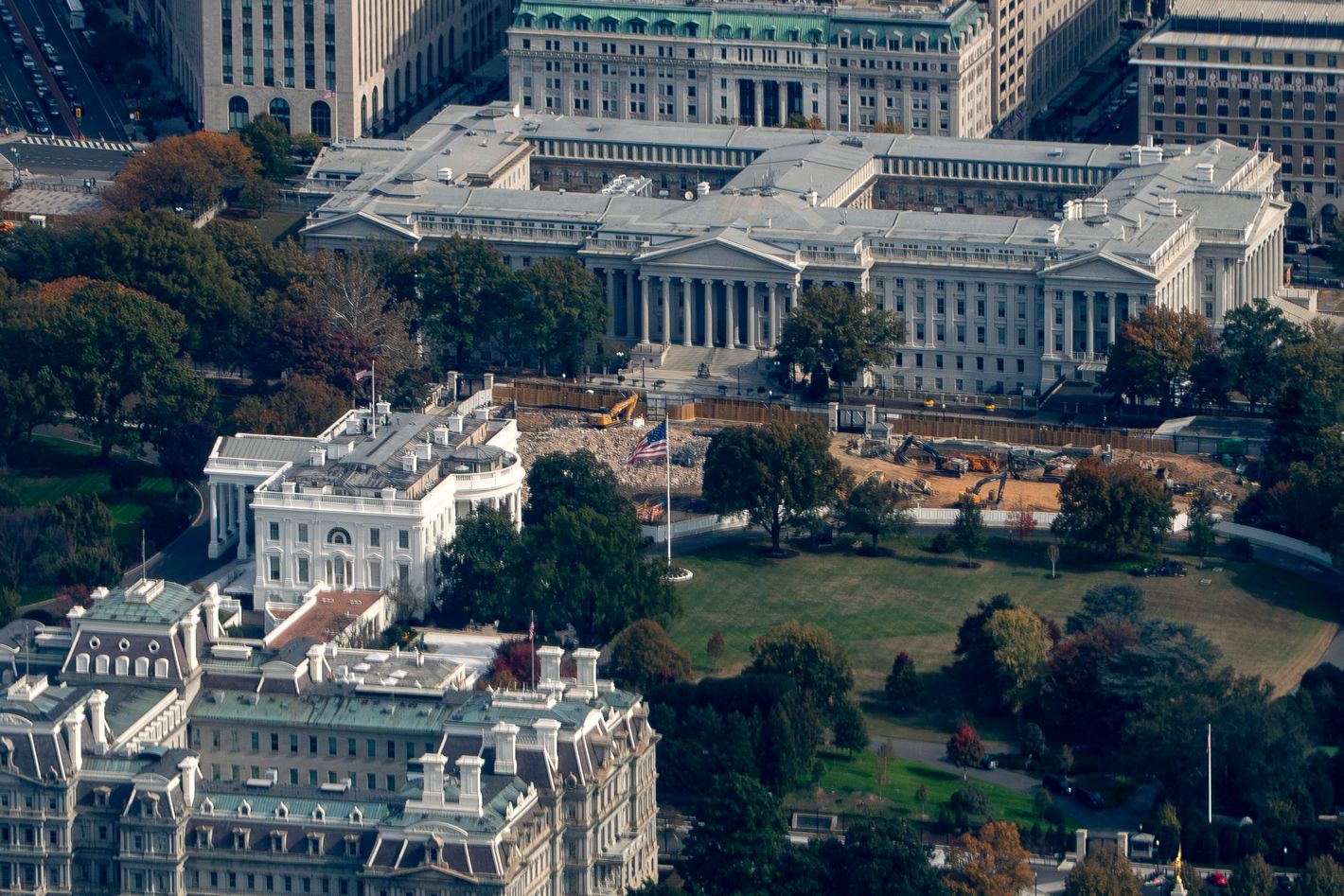
Have the architectural plans been released?
No. Presumably they exist, but they have not been made public. The ballroom project has not been submitted to the National Capital Planning Commission, the government body that approves plans to change government building in the Washington, D.C. area.
So is the ballroom project illegal?
Maybe! Federal preservation law says the National Capital Planning Commission must vet even relatively minor construction and renovation projects at the White House, as the Washington Post reported in August:
Three former planning commission members told The Washington Post that a review of any exterior construction project at the White House is required by federal law.
“If we had jurisdictional review over a fence, we would logically have jurisdiction over an entire wing being added to the White House,” said L. Preston Bryant Jr., who chaired the commission for nearly a decade before stepping down in 2019.
This process often takes years. So why was the East Wing facade torn down just months after Trump announced the ballroom project? Well, conveniently for Trump, commission chair Will Scharf — one of his top aides, who he appointed to lead the commission in July — doesn’t think a review is necessary at this point.
At the National Capital Planning Commission’s September meeting, Scharf claimed approval is only required in the construction phase, and expressed his excitement about the ballroom. Per the AP:
Will Scharf, who is also the White House staff secretary, said during a public meeting of the National Capital Planning Commission that the board does not have jurisdiction over demolition or site preparation work for buildings on federal property.
“What we deal with is essentially construction, vertical build,” Scharf said. He called Trump’s promised ballroom “one of the most exciting construction projects in the modern history of” Washington.
Legal experts told the Milwaukee Independent that demolishing part of the White House is indeed illegal, particularly during a government shutdown:
Legal experts said the demolition violates federal preservation law because no agency approval or budget authorization exists to alter the White House during a government shutdown.
The National Park Service, which manages the property, and the National Capital Planning Commission, which reviews construction on federal grounds, are both shuttered and cannot issue permits or oversight.
Without those clearances, they said, the work proceeds without lawful authority — making the demolition itself illegal under federal statute.
Who owns the White House?
We do. The White House and the surrounding grounds officially became a national park in 1961. “The White House is owned by the American people and stewarded by the National Park Service,” according to NPS.gov.
How big will the ballroom be?
The White House initially said it will seat 650 people, but in a September 13 interview with NBC News, Trump said the capacity will actually be 900 people. (The East Room, currently the largest room in the White House, can only seat 200.)
“We’re making it a little bigger. It will be top of the line, as good as it can get anywhere in the world,” he said.
Are there renderings of the new ballroom?
Yes; shortly after Leavitt’s announcement, the White House released ten artist renderings of what the new event space will look like from various angles.
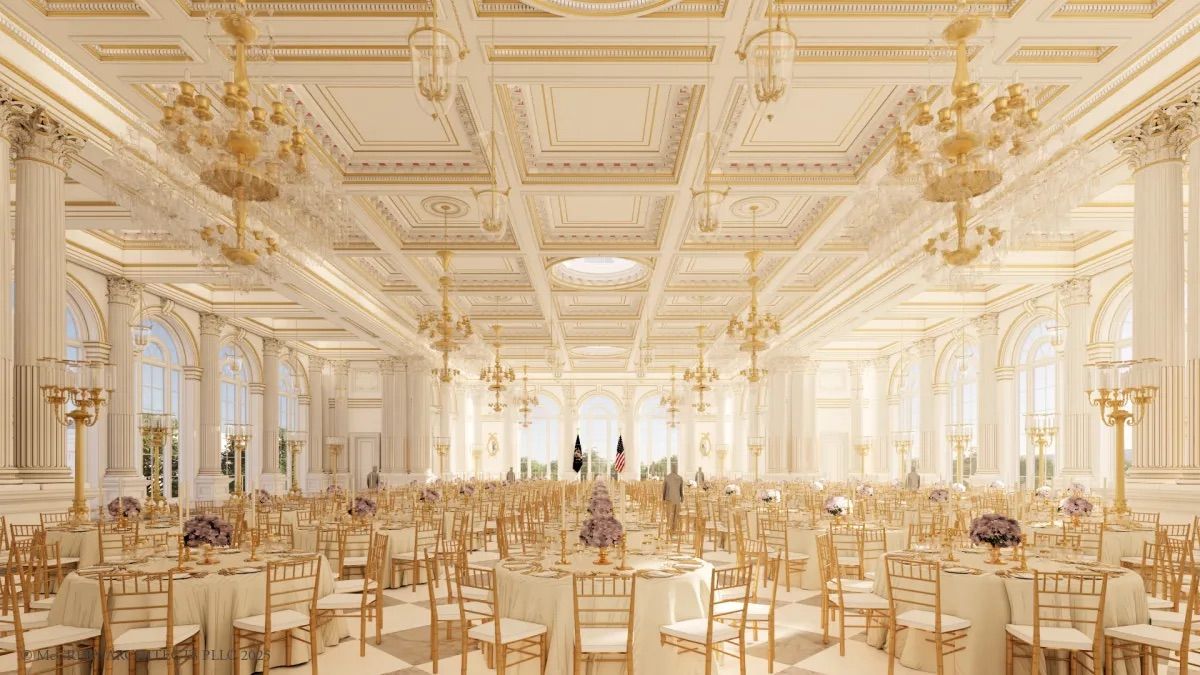
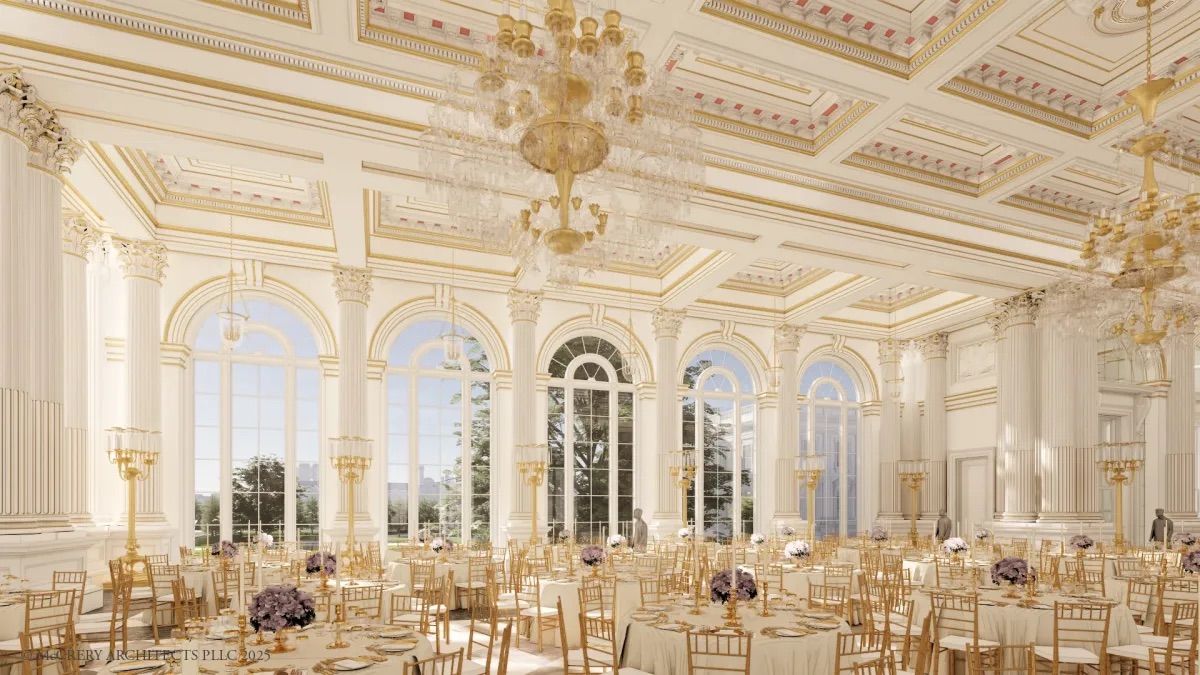
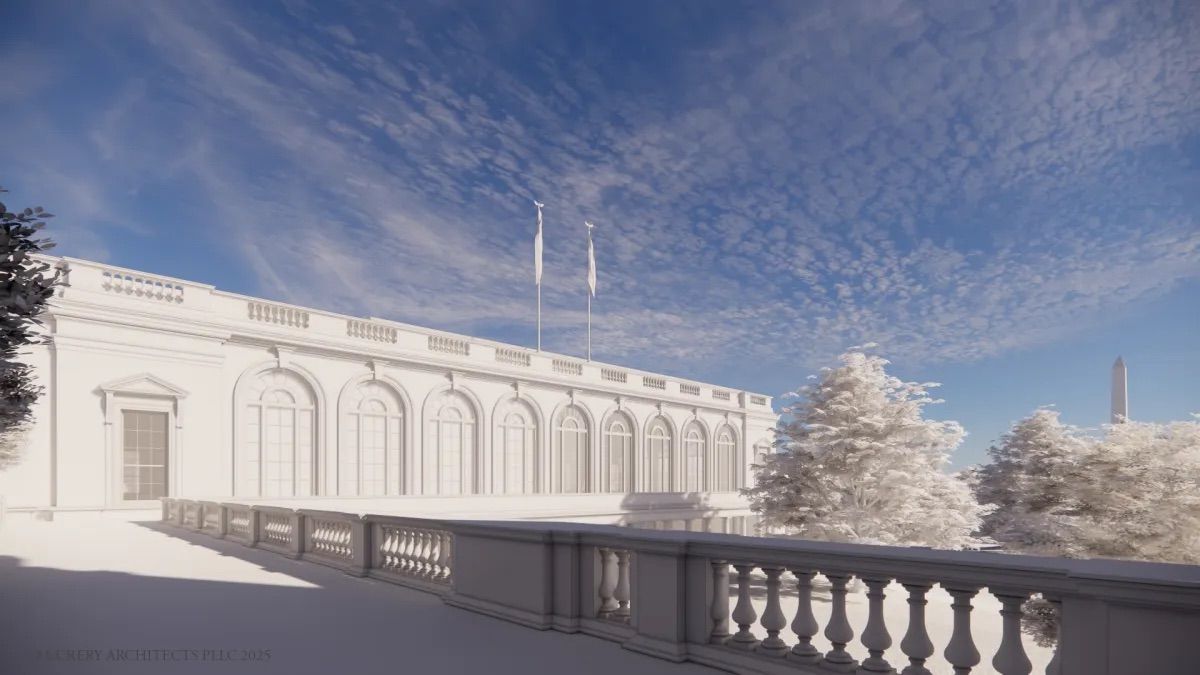
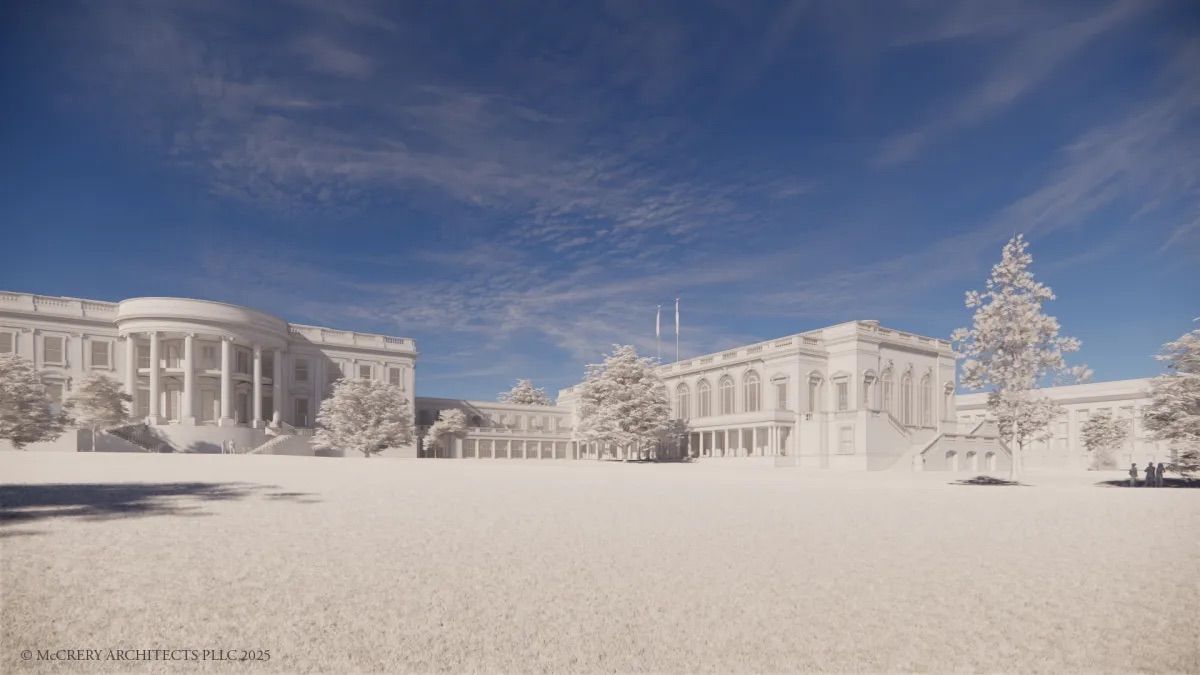
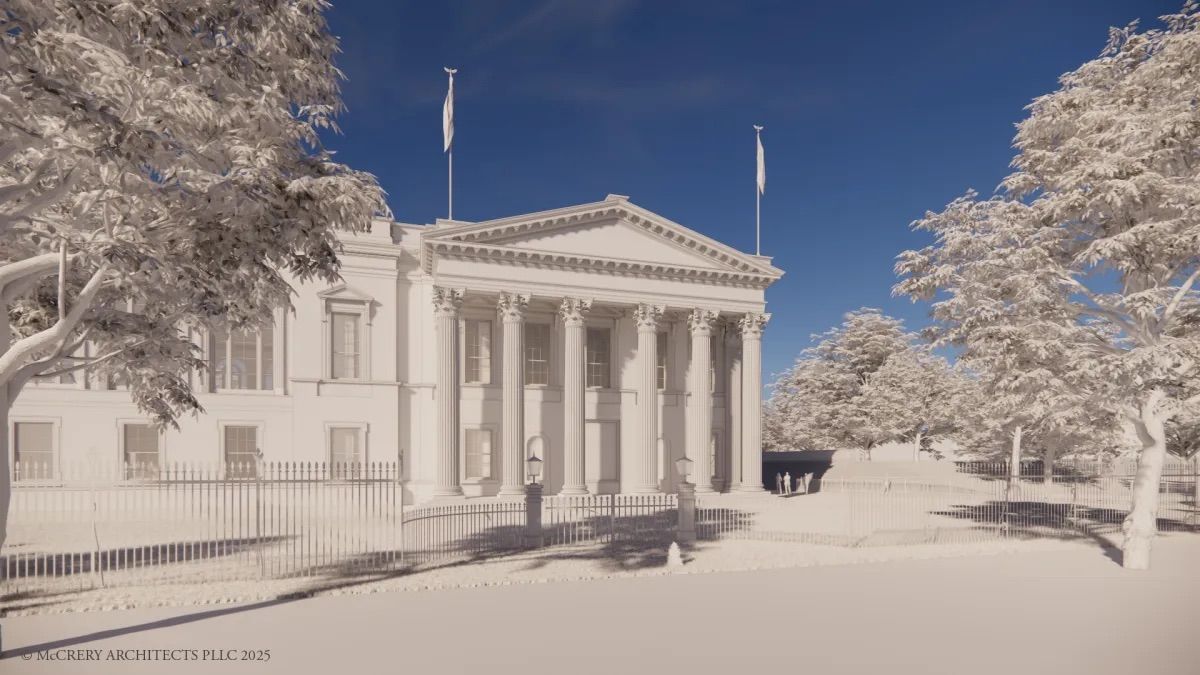
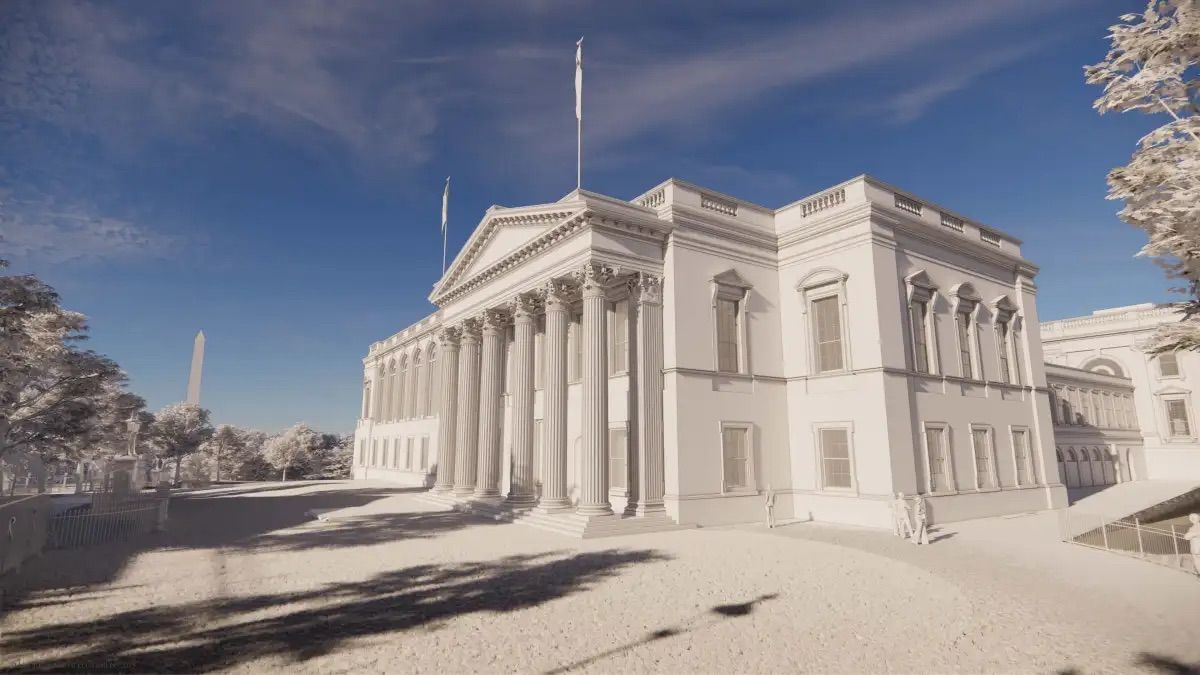
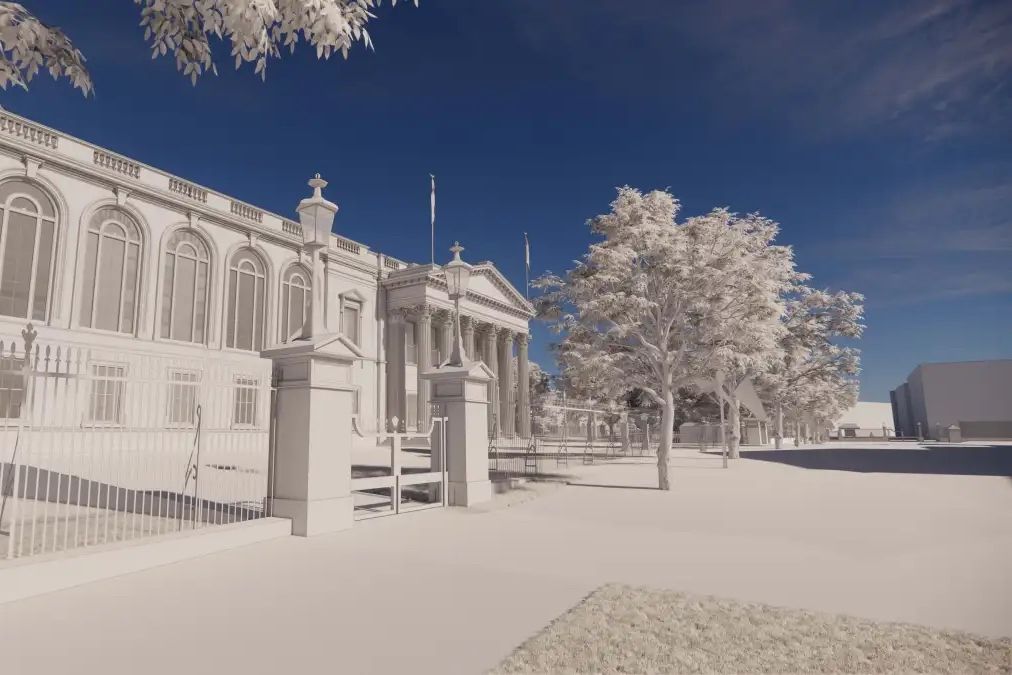
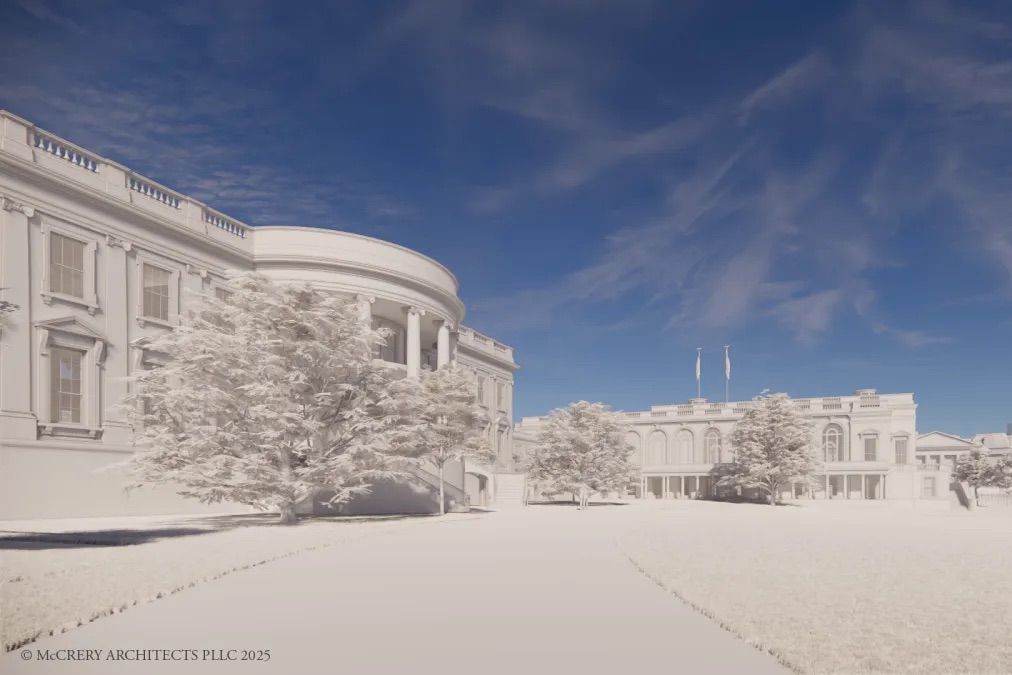
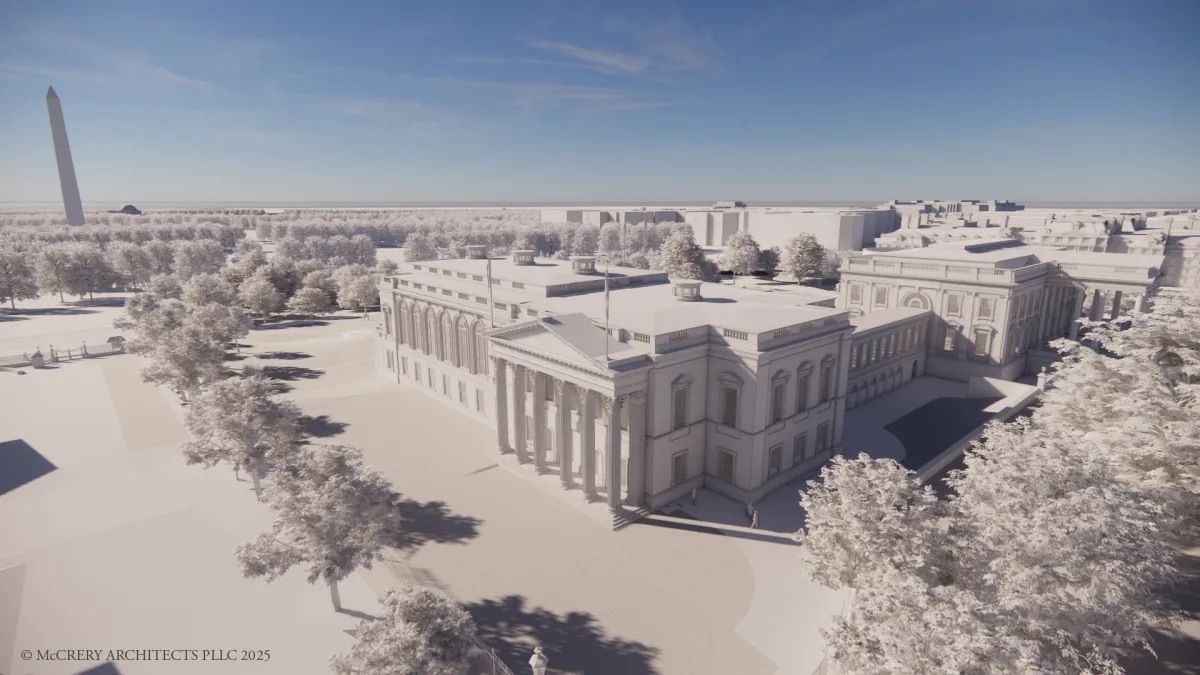
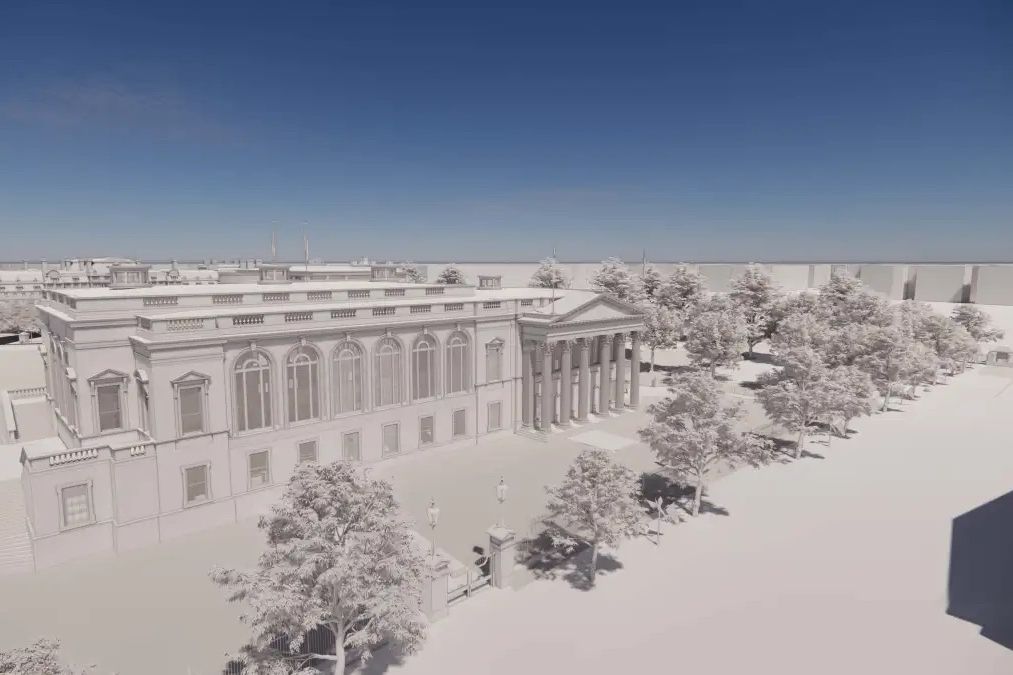
What will happen to the offices in the East Wing?
They were temporarily relocated, and Leavitt said, “the East Wing will be modernized and renovated.”
It’s unclear what this means for the people who currently work there, including the First Lady’s staff. Anita McBride, former chief of staff to First Lady Laura Bush, raised concerns about how the ballroom will impact the daily functioning of the White House.
“Betty Ford always called the East Wing the ‘heart’ of the White House,” McBride told the Hill. “All the business and policy gets done in the West Wing, that’s critically important. But the heart of the White House is the East Wing. And so what, what will be the new East Wing?”
What about public White House tours?
They were suspended indefinitely in late August 2025. The Washington Post reported:
The administration canceled tours scheduled for September and is not accepting tour requests beyond that, according to multiple congressional offices and an email sent by the White House to congressional offices. On their websites, members of Congress gave various reasons for the moratorium: “scheduled construction,” “extensive renovations” and “construction of President Trump’s new ballroom.”
It’s rare for the White House to cancel all public tours for months or even years. The administration has not responded to journalists questions about the tours.
Will the government shutdown delay ballroom construction?
Nope! Just before the shutdown went into effect a White House official told ABC News, “There will not be a stoppage of ballroom work when the shutdown occurs,” adding, “Work will continue to be performed as the funds currently supporting are not tied to a FY26 enacted appropriation.”
An administration official later told Snopes, “Ballroom construction is continuing as it is financed by private donations, not the federal appropriations that Democrats are holding up to push free health care for illegal immigrants.” Referring to the GOP’s false claim about Democrats’ shutdown demands.
How much will the ballroom cost?
Approximately $200 million, according to the White House.
Is Trump paying for the White House ballroom?
While ranting about a White House ballroom over the years, Trump always made it sound like he’d pay for it on his own. But Leavitt said, “President Trump, and other patriot donors, have generously committed to donating the funds necessary to build this approximately $200 million structure.”
The White House has declined to give details on how much Trump will actually pay and who exactly these “other patriot donors” might be. When asked on August 1 if he’d block foreign donations, Trump said he hadn’t thought about that: “I’m not looking for that. You have very strong restrictions. And we go by the restrictions.”
So far the only Trump contribution we know of is the $24.5 million YouTube paid to settle a lawsuit he brought after the site suspended his account following the Capitol riot. Court documents said the money would go to the Trust for the National Mall and the ballroom project.
Who’s donated so far?
On September 19, 2025, CBS News reported that multiple companies have already pledged to donate $5 million or more to the project:
Google, R.J. Reynolds, Booz Allen Hamilton, Lockheed Martin, Palantir and NextEra Energy have donated, and so have firms in the tech, manufacturing, banking and health industries, sources told CBS News.
Lockheed Martin is among the companies that have pledged more than $10 million, according to one of the sources. Company officials declined to confirm the amount, but Jalen Drummond, vice president of corporate affairs at Lockheed Martin said in a statement: “Lockheed Martin is grateful for the opportunity to help bring the President’s vision to reality and make this addition to the People’s House, a powerful symbol of the American ideals we work to defend every day.”
Trump hosted a dinner for ballroom donors at the White House on October 22. The Wall Street Journal reported that the guest list included more than three dozen organizations and individuals, some of whom have business with the federal government:
Companies that sent representatives to the East Room event included Lockheed Martin, Microsoft, Meta Platforms, Alphabet’s Google, Amazon.com and Palantir Technologies, according to the White House. The guest list also featured wealthy individuals and families, such as oil billionaire Harold Hamm, Blackstone Chief Executive Steve Schwarzman and Cameron and Tyler Winklevoss.
The White House released the full list of 37 individual and corporate donors in late October, but did not include how much each donor contributed.
What do donors receive?
They may get their name displayed on the building, but that hasn’t been decided yet. CBS News reported:
The pledge form, which was reviewed by CBS News, gives donors the option to pay in a lump sum or spread their contribution over three installments to be completed by 2027.
In return, donors are eligible for “recognition associated with the White House Ballroom.” What form that recognition takes is still being discussed, but several sources said the expectation is that names will be etched in the ballroom’s brick or stone.
They’ll also get a big tax write-off:
Meredith O’Rourke, a top political fundraiser for Mr. Trump, is leading the effort, paired with the Trust for the National Mall, an organization that supports the National Park Service. The trust’s nonprofit status means donations come with a federal tax write-off.
Doesn’t this raise major ethical issues?
Absolutely. Noah Bookbinder, the president of Citizens for Responsibility and Ethics in Washington, or CREW, told the New York Times: that the donor funding plan is “highly unusual.”
“There is certainly a risk that donors to this project, which Donald Trump has made clear is important to him, could see it as a way to curry favor with the administration,” he said.
Ethics watchdogs also noted after Trump’s hosted donors at the White House that such efforts put pressure on other companies to contribute:
“Every company that is invited to that dinner that either doesn’t show or doesn’t give knows now they will be out of favor with the Trump administration,” said Claire Finkelstein, a University of Pennsylvania law professor and faculty director of the Center for Ethics and the Rule of Law, told the Journal.
When will the ballroom be finished?
The press release says it’s “expected to be completed long before the end of President Trump’s term” in January 2029.
Will the ballroom be named after Trump?
It seems so, though Leavitt did not highlight this in the initial announcement. Potential donors received a pledge agreement that refers to “The Donald J. Trump Ballroom at the White House,” according to CBS News.
How long has Trump been planning this ballroom?
For many years, Trump has publicly claimed that he offered to build a collapsible $100 million White House ballroom and the Obama administration did not take him up on it:
Trump says he offered to build a ballroom in The White House for 100 million but never heard back from The Biden Administration. He then says he will try to make the offer to himself that he suggests he’ll pay for: We’ll see if Trump will approve it pic.twitter.com/EUazuRDm6Y
— Acyn (@Acyn) February 5, 2025
Surprisingly, this is at least partially true. In his book Believer: My Forty Years in Politics, David Axelrod confirmed that while he was working in the Obama White House in 2010, Trump called to pitch him on a ballroom. (Trump claims he offered to pay for it himself, but Axelrod did not address that detail.)
“‘I build ballrooms. Beautiful ballrooms,’” Trump said, according to Axelrod. “Not being much of a dancer, I didn’t know where he was headed. ‘I see you have these state dinners on the lawn there in these shitty little tents. Let me build you a ballroom you can assemble and take apart. Trust me. It’ll look great.’”
Axelrod said he handed the pitch off to someone else, and they didn’t follow up.
Is this project really necessary?
President Trump and White House officials have repeatedly described the ballroom as a “much-needed” addition to the White House.
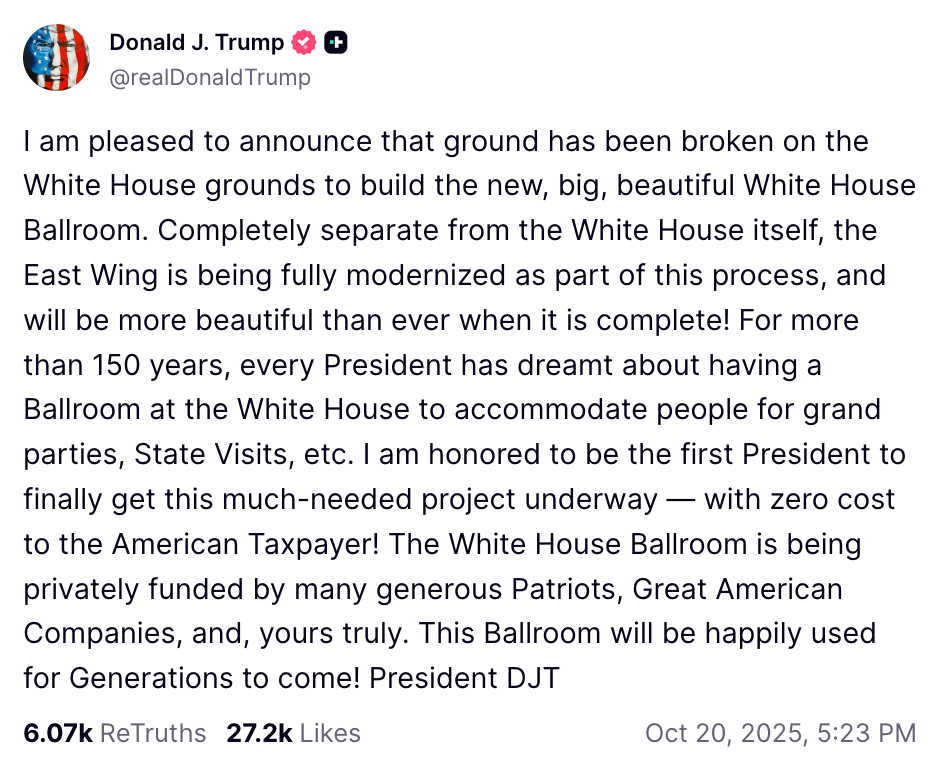
Since the East Room, the largest room in White House, can only seat 200 people, state dinners usually take place in a tent on the lawn.
Back in 2011, Trump lamented that the White House is using “an old, rotten tent that frankly they probably rented, pay a guy millions of dollars for it even though it’s worth about $2?” But as Eater noted, it’s actually a pretty swanky tent:
The tent for the 2009 India dinner, which Vanity Fair described as “a massive pavilion, complete with an orchestra platform, theatrical lighting, a professional sound system, full heating, satellite kitchens, and a dozen chandeliers bedecked with sustainably harvested magnolia branches and ivy,” took six days to construct and cost a reported $85,000.
And the symbolism of this new project is “monstrous,” as New York’s Chris Bonanos pointed out: “That Trump will build a ballroom — the most on-the-nose embodiment of let-them-eat-cake Versailles extravagance — just as he throws old people off Medicare and kids off food stamps is as big a trolling as has ever been trolled.”
So why is Trump really building this ballroom?
Is Trump doing this because he’s a magnanimous builder who wants to share his gift with the American people? Or is he just a narcissist looking to leave his mark on the White House by transforming it into Mar-a-Lago North? That’s a matter of interpretation. But it’s pretty clear that he really, really hates partying in a tent.
This post has been updated throughout.
More on Politics

